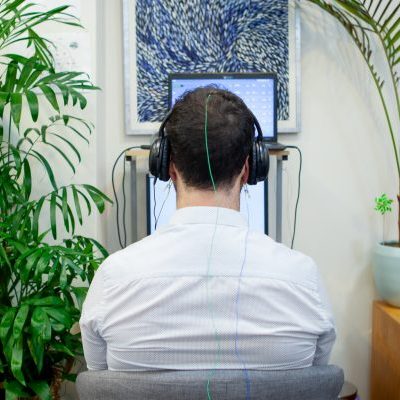Neurofeedback for ADHD

What is Neurofeedback for ADHD?
Neurofeedback Training (NFT) is a non-pharmaceutical and non-invasive process that may be used to help improve irregular brainwave activity and reduce the severity of certain symptoms that are associated with ADHD. NFT protocols are developed by experienced psychologists and neurofeedback technicians, taking into consideration an individual’s unique circumstances and expressions of symptoms.
In essence, NFT is a form of biofeedback for the brain. Biofeedback is a method of learning how to control bodily functions, such as heart rate, muscle tension and blood pressure, in order to decrease tension, manage anxiety, and help with other symptoms that affect daily life. Using biofeedback principles, NFT may help individuals provide feedback to train their own brain to self-regulate its own brainwaves.
How Does Neurofeedback Work?
Neurofeedback works by capitalising on the innate neuroplasticity of the brain. Our brain circuitry, structure, and electrical activity can change based on our feedback and experiences. Although children’s brains are more plastic than adult brains, all brains retain some level of plasticity. Resources such as the Biofeedback Certification International Alliance (BCIA) have stated that NFT is applicable to people of all ages. A common recommendation is that NFT is only conducted with individuals aged 6 and older.
During NFT, sensors are placed on an individual’s scalp and ears in particular spots in order to measure electrical output via an electroencephalogram (EEG). By providing audiovisual feedback for the individual through a game, image gallery, or other activity, the brain works to self-correct towards target brainwave thresholds. For example, individuals may hear a beep when brainwaves are within optimal thresholds, or have the screen freeze when brainwaves are outside of this optimal range. No deliberate effort needs to be made by the individual to modulate their brainwave activity. NFT often begins with a small number of sessions per week. However, more frequent sessions may result in faster progress.
How is NFT Administered?
Individuals undergoing neurofeedback for ADHD will begin with a comprehensive initial assessment held at a clinic. This is done to help formulate an individually tailored therapy plan. The initial NFT session will then utilise a QEEG diagnostic tool which applies mathematical and statistical analysis to the individual’s brainwave patterns and compares them to neurotypical brainwaves in order to create a unique brain map. This brain map is then used to identify patterns outside of a neurotypical range, with goals set using NFT software to help move these patterns towards a typical brain activity baseline. Progress towards this baseline is then tracked, monitored, and consistently reviewed by an experienced neurofeedback technician.
How can Neurofeedback for ADHD Benefit People?
NFT is sometimes used by clinicians as an accompaniment alongside other therapies to help reduce symptoms related to ADHD. It is believed that NFT can help to:
- Reduce anxiety, mind chatter, and concentration difficulties
- Improve adjustment-related symptoms and behavioural health
- Facilitate better communication within the brain to promote memory recollection, as well as sensory regulation and integration.
- Improve focus, sleep, and mood
Neurofeedback training is sometimes applied as an alternative to medication. This may be done for individuals who are unwilling or unable to take medication to help manage their symptoms. Certain medication can also have unpredictable side-effects (physically or mentally) for individuals with ADHD. In contrast, when administrated by a trained professional, NFT is believed to cause no negative effects. In addition, as medication only works while it is being taken, NFT training can be seen by some as a preferable alternative as it has the potential to deliver longer lasting results to help alleviate their symptoms.
Does NFT Work Well?
NFT has been reported to help individuals alleviate symptoms in the majority of cases. Some individuals report improvements with targeted symptoms after aonly receiving a few NFT sessions. However, the length of NFT required varies depending on the severity and complexity of symptoms. Simple cases may require a smaller number of total sessions to achieve appropriate results. More complex cases will usually require many more sessions than normal. Individuals who undergo NFT often continue to improve their own brain regulation after their sessions end. In the majority of cases, the improvements gained from NFT are retained long term.
Occasionally, mild side-effects may occur during NFT. This is particularly the case if a training session goes on for a long time. Side-effects may include tiredness, anxiety, feeling irritable, or having a mild headache. These feelings typically subside shortly after the session has ended.
